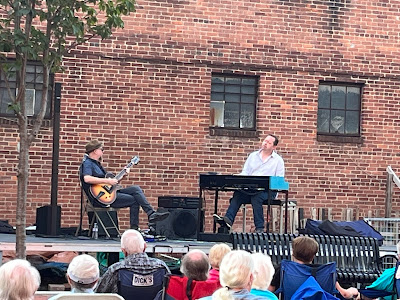Playlist and Notes 6 February 2024
Today’s Show: We celebrate February Birthday. Also, we
celebrate Black History Month by examining how jazz and the blues represented, chronicled,
and celebrated the African American community.
Joshua Redman – Baltimore (5:38)
James P. Johnson – Charleston (1:49)
Sadao Watanabe – Early Spring (Live at Blue Note Tokyo)
(8:37)
Joe Sample – Hippies on a Corner (5:57)
Mississippi Fred McDowell – Soon One Mornin’ (Death Come
A-Creepin’ in My Room) (3:14)
Shemekia Copeland – Clotilda’s On Fire (4:28)
Gene Gilmore – The Natchez Fire (2:52)
Billie Holiday – Strange Fruit (3:15)
Louis Armstrong – West End Blues (3:20)
Duke Ellington – It Don’t Mean a Thing (If It Ain’t Got That
Swing) (3:11)
Lonnie Johnson – Another Night To Cry (3:20)
Bill Evans – Gloria’s Step [Take 2] (6:08)
Notes
Laura
Barton writes “…the root of the disconsolation that
colors the blues, is perhaps, because
it is a music
born of a people wrenched from their homelands and brought to America to be
slaves. In its
ramblings and its restlessness, lies the sense of the impossibility of return
and the sorrow of never truly arriving.”
A
documentary on the Rhythm Club Fire, noted in Gene Gilmore’s “The Natchez Fire,”
can be seen here.
A
fan video of Gene
Gilmore’s “The Natchez Fire” written and recorded in 1940.
Blues
music was, and is, an alternative form of storytelling, commentary, and oral
history that diverged from the dominant narrative. It was a way to recount what
was happening to a community that was not included or covered by dominant media
outlets, such as local newspapers and radio stations.
Time
Magazine in 1999 called “Strange Fruit” the song of the century. Nina Simone
said: “That is about the ugliest song I have ever heard. Ugly in the sense that
it is violent and tears at the guts of what white people have done to my people
in this country.”

Comments
Post a Comment